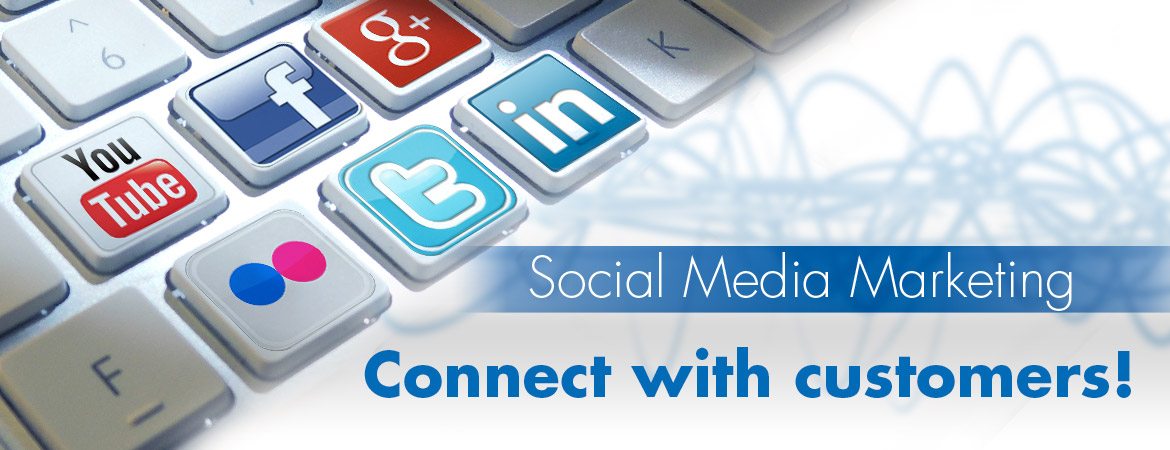For most businesses, generating leads is the ultimate benefit of creating and maintaining a social media presence. In order to make social media an effective lead generation machine, you first need to generate a following. This means fans and followers on Facebook, Twitter, LinkedIn, Instagram, and your other social media accounts.
8 Tips for Getting More Social Media Followers, Fans, and Likes
1. Prioritize the social networks where your fans are likely to be.
“Which social media network should I focus on?” This is one of the most commonly asked questions marketers have. We recommend that you create and maintain a presence on the top social networks (Facebook, Twitter, LinkedIn, Instagram, and Pinterest), but focus your efforts on the social media networks where your target buyers are spending time.
-Create profiles for all the top social networks.
Have you ever found yourself wanting to tweet to or about a company, only to find they don’t have a Twitter account? I have. Not only is it frustrating, but it also kind of seems amateur and unprofessional. It also creates distance between your brand and your customers and potential customers.It’s important that you at least give folks the option to get in touch with you on their social network of choice, and maintain some sort of presence there.
-Focus on the networks where your target buyers spend time.
Take the time to research your buyer personas so you can find out where they hang out on social media. This will help you use social media to generate real customers, and delight existing ones.
2. Optimize your social profiles.
This includes choosing an easily identifiable username, uploading a recognizable photo (like your company logo), including clear and concise descriptions of your business, and leading people back to your website with a trackable link.
3. Promote your social presence everywhere.
And by everywhere, we mean everywhere: On various pages of your website, on your blog, on signage in your storefront (if you’re a local business), in print advertising, on your business cards, in your email marketing messages. Many social media sites now have official “Follow” buttons you can include on your website and blog. That way, people can start following you with a single click — without ever having to leave your website or blog.
Cross promotion across all your social media accounts is also a great way to let your social followers know where else on social media they can find you. That way, you can get your Twitter followers to become your Facebook fans; to get your Facebook fans to become your Instagram followers; and so on.
4. Add social sharing buttons to all your content.
Just as you should be promoting your social presence in as many places as possible, you should also be enabling your site visitors and email subscribers to share your content with their personal networks as easily as possible.
5. Share useful, valuable content.
It’s not just enough to promote your presence. You need to make sure your presence is something that’s worth following in the first place.
Make sure your tweets, Facebook posts, and LinkedIn updates consist of valuable, useful, and engaging content. Avoid product-focused content, and instead, aim for social updates that contain educational content that has the potential to attract more fans and followers.
6. Interact with followers and anyone who mentions you.
Most social networks are all about making connections and having conversations. Just as you should be regularly sharing educational, insightful content, you should also be monitoring your presence and interacting with your fans and followers. This’ll help you build a loyal, engaging following.
7. Find, follow, and build relationships with people in your industry.
Social media is a great way to find and follow leaders in your industry, which can include both people and other brands that are creating great content related to your industry (and aren’t a direct competitor, obviously).
8. Hire a dedicated social media manager.
There’s a whole lot more than goes into optimizing a company’s social media strategy than someone can do on as a “side project” — especially with all the important changes and trends that are cropping up in the social media world all the time.
Building your social media reach will take some time, but if you’re committed to the steps above, we guarantee you’ll start seeing results.
Source: http://blog.hubspot.com/blog/tabid/6307/bid/27094/8-Guaranteed-Ways-to-Increase-Social-Media-Reach.aspx#sm.0001w9k4kp1eh4fhfzxidvla11tw7





